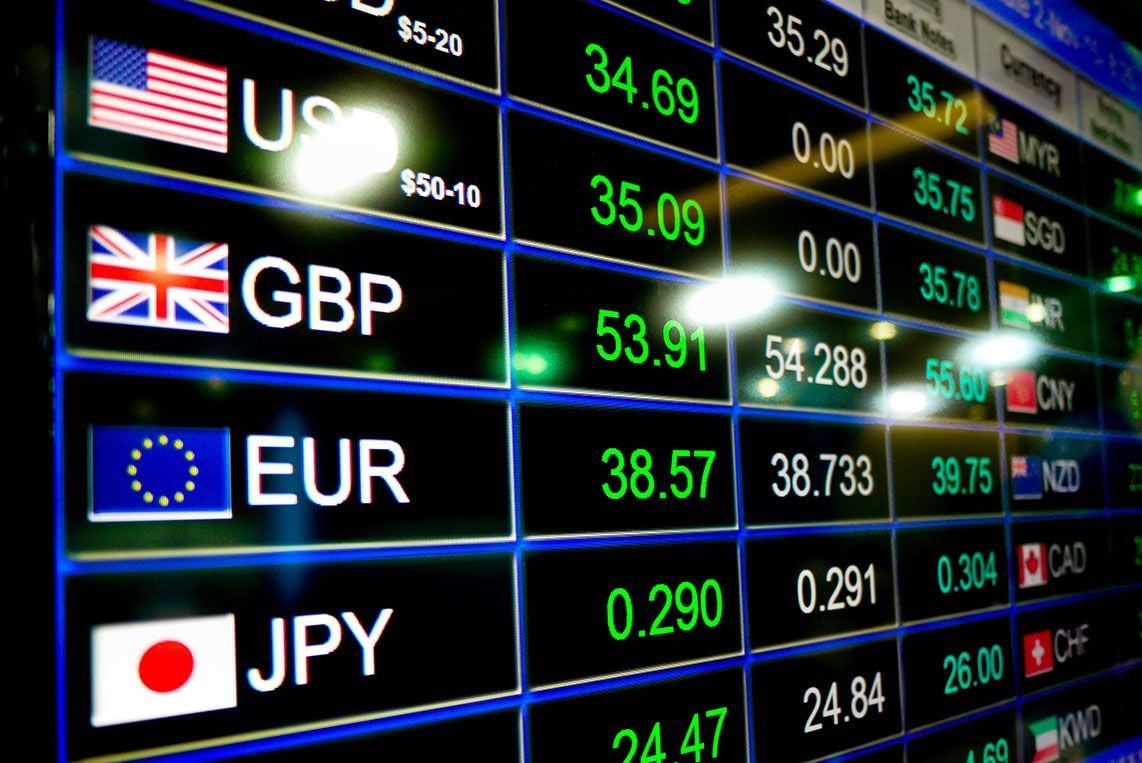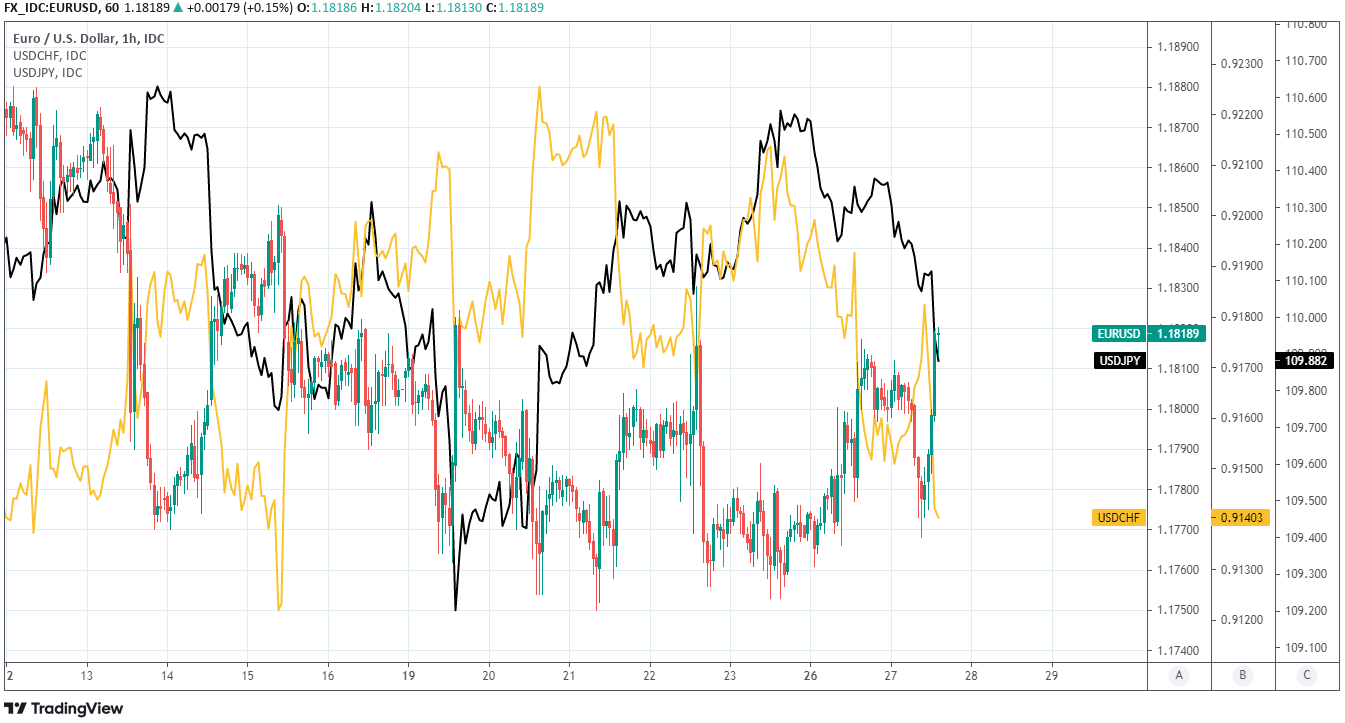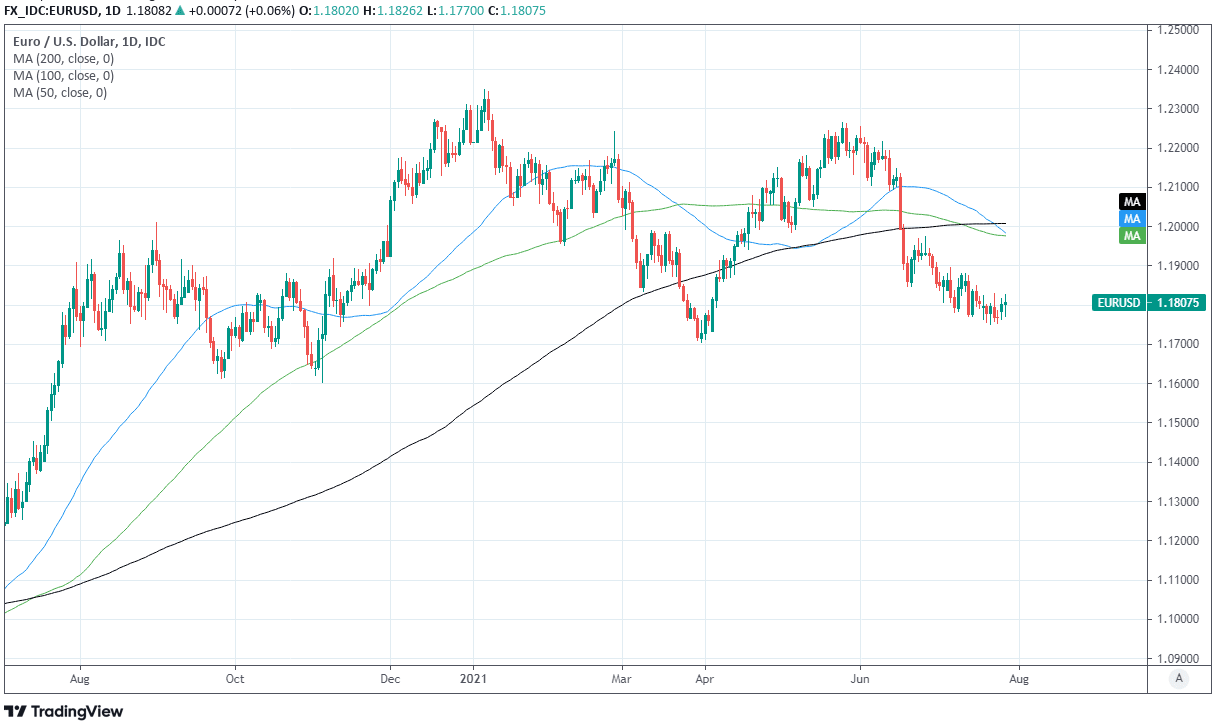Euro-Dollar Ascendant as Popular FX Trades Slide with Global Markets
- Written by: James Skinner
- EUR in ascendency with CHF & JPY amid market rout
- Global stocks follow CN indices lower, FX risk reverses
- Solidifies appearance of bottom on EUR/USD's charts

Image © Adobe Images
- EUR/USD reference rates at publication:
- Spot: 1.1814
- Bank transfers (indicative guide): 1.1400-1.1480
- Money transfer specialist rates (indicative): 1.1710-1.1730
- More information on securing specialist rates, here
- Set up an exchange rate alert, here
The Euro-to-Dollar exchange rate was in the ascendancy alongside perceived safe-havens on Tuesday as global stock markets appeared to follow Chinese indices lower and recently popular currency trades went tentatively into reverse.
Europe’s single currency was up from 1.1770 in early European trading and levitating back above 1.18 against the Dollar having risen alongside the Japanese Yen and Swiss Franc, while the greenback itself advanced against a majority of other currencies.
The biggest fallers in the G10 segment of the major currency space were the Norwegian Krone and New Zealand Dollar, both being currencies which had recently outperformed and whose losses potentially help to explain EUR/USD’s elevation amid Tuesday’s global market combustion.
“It’s all about China again today in markets – and what we are seeing in some corners is just a reflection of what we could potentially see in many others ahead,” says Michael Every, a global macro strategist at Rabobank.
“That Chinese sell-off was obviously prompted by the official crack-down on edu-tech, which came on the back of one on fin-tech, and then one on tech in general. And on property. And food delivery, with Meituan stock tumbling 15% after Beijing regulators forced the firm to ensure all of its delivery drivers were paid the minimum wage,” Every explains.
The Eurozone has some of the lowest interest rates in the world and these make the Euro a choice “funding currency” for traders whenever they’re looking to bet on gains in value for other third currencies, although this has a flip-side which tends to benefit low interest rate currencies like the Euro, Franc and Yen during periods of market turbulence.
Above: Euro-Dollar shown at hourly intervals with USD/CHF and USD/JPY.
Secure a retail exchange rate that is between 3-5% stronger than offered by leading banks, learn more.
The funding currency process sees the Euro borrowed and sold in exchange for Dollars before the Dollars themselves are swapped in exchange for the destination currency at the other end of the trade, which is why the Euro often underperforms currencies like the New Zealand Dollar and Krone in periods when global markets are rising and investors are happy to take risk.
“Today’s sharp falls have taken the benchmark indices in both Hong Kong and the Chinese mainland more than 15% below their February highs. But a few recent developments suggest that the outlook for those indices may be even worse than we had initially thought,” says Oliver Jones, a senior markets economist at Capital Economics.
“Our relative pessimism about China’s equities was initially rooted mainly in our view of the country’s economic fundamentals. We argued that, having weathered the start of the pandemic far better than any other major economy, China’s economy would lose momentum, with policy support being withdrawn and the earlier boost to export demand likely to fade as consumption patterns in the rest of the world slowly began to return to normal,” Jones explains.
I'm on the inflation side but this chart concerns me.
— Otavio (Tavi) Costa (@TaviCosta) July 26, 2021
A yuan devaluation is one of the main deflationary risks today.
I know you heard this over and over again… but something is indeed unraveling.
Chinese banks and ADRs are in big trouble.
PBOC will be forced to act. pic.twitter.com/bXRCqOIg8k
Risk taking was the last thing that investors appeared happy to do on Tuesday, which saw all major stock markets falling across the globe with the exception of Australia’s, and with concurrent losses for perceived risky currencies like the Kiwi and Krone that appeared to benefit the Euro even as losses mounted for benchmarks on the continent where declines of more than -1% were seen for Portuguese, Spanish and Danish stock indices.
Tuesday’s declines for stocks and risk currencies have accentuated the appearance of a bottom having been formed underneath the Euro-to-Dollar exchange rate somewhere between 1.1750 and 1.1777, although technical analysts suggest it could face formidable resistance barriers on the charts once above the 1.19 handle.
“Tactically, we would need to see a break above 1.1882-1.1896 pivots to suggest a trend reversal is taking hold. Key short-term resistance rests at the 1.1976 post-Jun FOMC price high and the confluence of 50-day, 100-day, and 200-day moving averages at 1.1979- 1.2007. We suspect that an initial rebound will struggle at those levels,” says Jason Hunter, a technical analyst at J.P. Morgan.
Above: Euro-Dollar exchange rate shown at daily intervals with 50, 100 & 200-day averages.






